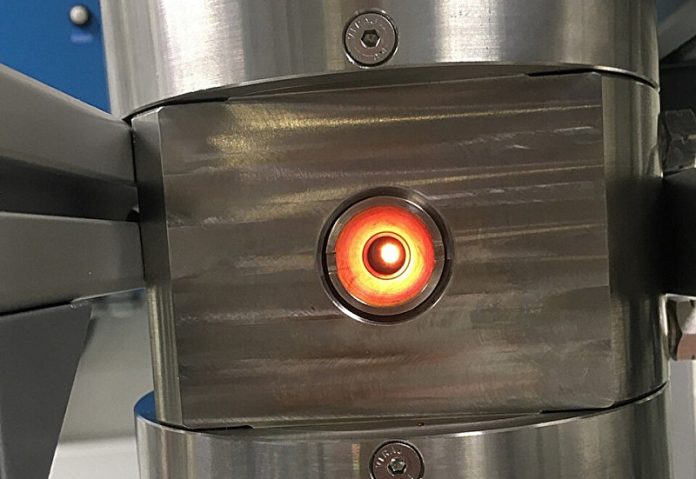
Scientists at The University of Manchester have made a groundbreaking discovery by recreating volcanic eruptions in a laboratory setting.
Using a specially designed pressure vessel, they were able to simulate how bubbles form and grow in volcanic magma, helping them understand what triggers different types of volcanic eruptions.
This research, published in the journal Science Advances, offers new insights into one of nature’s most powerful and mysterious phenomena.
Volcanic eruptions can vary dramatically.
Some volcanoes produce gentle lava flows, while others unleash explosive eruptions that can cause massive destruction.
Sometimes, a volcano might even switch from one type of eruption to another without warning.
The most dangerous eruptions release huge amounts of magma and volcanic gases into the atmosphere, leading to local disasters and even global effects, such as changes in weather patterns and disruptions to air travel.
One key factor that influences how a volcano erupts is how the gas dissolved in the magma is released.
To illustrate this, scientists compare it to opening a bottle of champagne. In a calm setting, the champagne flows out gently when the cork is removed, similar to a mild volcanic eruption. But if the bottle is shaken, the champagne explodes out of the bottle, much like an explosive volcanic eruption.
Even though both bottles contain the same amount of gas, the way the gas is released makes all the difference.
In their study, scientists focused on how easily the magma separates from the gas as it rises toward the surface. The more tightly the gas and magma are coupled together, the more likely an explosive eruption will occur.
For the first time, the researchers were able to observe and measure the growth of bubbles in magma in real-time as it approached the surface.
The experiments were conducted using a thick-walled pressure vessel, which was strong enough to contain large amounts of energy stored in the magma.
The scientists used X-rays from the Diamond Light Source’s I12-JEEP synchrotron beamline to look inside the magma sample. This allowed them to see how bubbles formed, grew, and eventually merged together as the pressure and temperature changed.
Dr. Barbara Bonechi, the lead author of the study and a Research Associate in the Department of Earth and Environmental Sciences at The University of Manchester, explained, “The experimental results we obtained by combining our new pressure vessel with X-ray synchrotron radiography provide a better understanding of how magma and gases interact during a volcanic eruption.
This research helps us understand how volcanic eruptions can change from gentle to explosive, which is crucial for assessing hazards and reducing risks in areas with active volcanoes.”
The pressure inside the vessel could be adjusted to simulate conditions at different depths within a volcano, from 10 kilometers underground to just beneath the surface. By observing how the walls of expanding bubbles break apart under different conditions, the researchers were able to confirm earlier predictions made through computer modeling.
This study not only advances our understanding of how magma behaves but also has important implications for predicting volcanic eruptions and improving safety measures in regions with active volcanoes.
As scientists continue to refine their techniques, they hope to gain even deeper insights into the complex processes that drive volcanic eruptions, ultimately helping to protect communities living in the shadow of these powerful natural forces.



